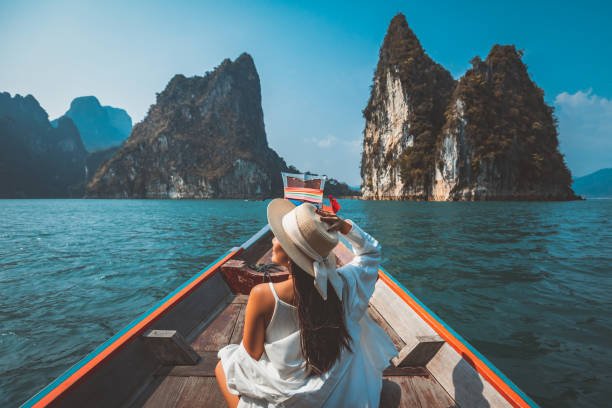Wayfarer Weekly: Cultural Routes in Global Travel
Wayfarer Weekly serves as a consistent source of structured travel analysis, guiding readers through evolving pathways of exploration. In this edition, the focus turns to cultural routes in global travel, examining how traditions, routes, and shared heritage connect travelers with destinations. As Wayfarer Weekly continues to map global patterns, cultural connections provide a foundation for understanding not just where people travel, but also why these routes hold significance across borders and generations.

The Role of Cultural Routes in Global Travel
Cultural routes represent more than physical paths. They form links between societies, histories, and shared practices that define the essence of travel. Through Wayfarer Weekly, these routes can be observed as both functional and symbolic elements of world travel, shaping networks of movement and exchange.
Travelers often engage with cultural pathways as part of both formal itineraries and informal discoveries. Routes such as pilgrimage trails, ancient trading corridors, and heritage-linked passages highlight the diverse motivations for movement across regions. Wayfarer Weekly documents these aspects by providing a structured lens on how they continue to influence tourism and cross-cultural interaction.
Historical Foundations of Cultural Routes
Cultural routes in global travel trace back centuries. Merchants, explorers, and pilgrims established pathways that remain relevant in modern times.
- Trade Routes: Ancient trade corridors, such as the Silk Road, created connections between Asia, Europe, and Africa. These passages facilitated exchanges of goods, ideas, and cultural practices.
- Pilgrimage Paths: Religious and spiritual routes established a framework for movement. Paths like the Camino de Santiago in Europe illustrate how travel intertwines with faith traditions.
- Colonial and Maritime Routes: Seafaring corridors shaped interactions between continents, defining cultural exchanges that persist today.
Wayfarer Weekly integrates these contexts into its travel insights, emphasizing how historic foundations continue to structure modern travel patterns.
Modern Interpretations of Cultural Travel
Today, cultural routes in global travel extend beyond history. They incorporate urban pathways, contemporary festivals, and modernized heritage routes. Cities serve as cultural nodes where traditions intersect with modern global connectivity.
Wayfarer Weekly highlights that many cultural pathways are now organized through collaborative projects between governments, tourism boards, and international institutions. Routes recognized by global organizations reflect not only local traditions but also global heritage preservation efforts.
Regional Variations in Cultural Routes

Cultural routes differ widely across continents. Each region incorporates local identity into pathways that attract domestic and international travelers.
Asia
Asia hosts a variety of cultural travel networks. From the Silk Road corridors to modern urban art routes, the continent blends ancient practices with contemporary pathways. Wayfarer Weekly observes how Asia integrates cultural tourism with technological tools such as mapping systems and mobile-based heritage guides.
Europe
Europe has formalized cultural routes through organized networks. Historical routes such as Roman pathways, medieval pilgrimage trails, and modern city circuits provide travelers with structured heritage experiences. Wayfarer Weekly frequently notes how European nations balance preservation with accessibility.
Africa
Africa’s cultural routes often highlight community-based traditions. From caravan paths across the Sahara to heritage routes along coastal settlements, Africa’s cultural pathways are shaped by both trade and tradition.
The Americas
Indigenous traditions, colonial influences, and modern cultural projects define the Americas’ routes. In many regions, cultural pathways link archaeological sites, local festivals, and preserved settlements. Wayfarer Weekly tracks how these connections support diverse travel experiences.
Oceania
Island nations in Oceania emphasize maritime routes and cultural linkages across the Pacific. Traditional navigation systems form a significant part of heritage tourism in this region.
Cultural Routes and Digital Travel Tools
Digitalization influences how cultural routes are experienced. Wayfarer Weekly notes that mobile applications, digital archives, and interactive maps now guide travelers across heritage pathways. Online platforms also allow travelers to access layered histories, merging storytelling with route navigation.
Virtual experiences further expand cultural routes. Even travelers unable to physically visit heritage sites can explore them through digital platforms. Wayfarer Weekly includes these elements as part of modern cultural travel analysis.
Shared Heritage and Global Collaboration
Cultural routes often require international cooperation. Shared heritage corridors across borders, such as European heritage networks or transnational trade paths, illustrate how nations collaborate to preserve cultural identities.
Wayfarer Weekly highlights such partnerships as essential for sustaining global travel networks. Collaborative management ensures that cultural routes remain accessible, sustainable, and authentic in their presentation.
Challenges in Preserving Cultural Pathways
While cultural routes enrich global travel, challenges also emerge in their preservation and accessibility.
- Overcrowding: Popular heritage routes often face congestion, which can affect authenticity.
- Preservation: Balancing cultural preservation with modernization remains complex.
- Accessibility: Not all cultural routes are equally accessible due to infrastructure or geopolitical conditions.
Wayfarer Weekly documents these challenges within its structured coverage, offering readers an overview of factors shaping the sustainability of cultural travel.
The Role of Festivals and Cultural Events

Festivals and cultural events transform routes into living experiences. Wayfarer Weekly highlights how seasonal celebrations, music traditions, and regional events become temporary cultural pathways. These events guide travelers along routes that may not exist outside festival periods, thereby linking communities and visitors through shared experiences.
Language, Cuisine, and Artistic Routes
Cultural travel is not limited to physical pathways. Language-based routes, culinary networks, and artistic trails form intangible yet structured travel routes.
- Language Routes: Linguistic diversity forms travel connections, as travelers engage with multilingual pathways.
- Culinary Routes: Food traditions define local travel experiences, linking regions through shared cuisine.
- Artistic Routes: Visual and performing arts create cultural journeys, as Wayfarer Weekly observes through case studies of global exhibitions and art festivals.
Economic and Social Dimensions
Cultural routes also impact local economies and social structures. Communities benefit from tourism linked to heritage routes, while travelers gain structured experiences that blend learning and leisure. Wayfarer Weekly often outlines how cultural routes support both regional development and global awareness.
Future of Cultural Routes in Global Travel
Looking ahead, cultural routes will continue to expand and adapt to evolving travel landscapes. Sustainability, digital integration, and cross-cultural collaboration will remain central themes. Wayfarer Weekly predicts that emerging technologies and collaborative heritage frameworks will redefine how cultural pathways are navigated in future travel.
Conclusion
Wayfarer Weekly consistently provides structured insights into evolving patterns of global travel. By focusing on cultural routes, this edition highlights the pathways that connect societies, histories, and contemporary practices. Cultural routes are not only physical journeys but also reflections of shared heritage, collaboration, and continuity.
In conclusion, Wayfarer Weekly frames cultural routes as essential components of global travel analysis. They offer a comprehensive lens through which travelers can understand the connections between destinations, traditions, and identities. As travel continues to evolve, these routes will remain integral to global exploration, serving as pathways of culture, history, and modern interaction.
